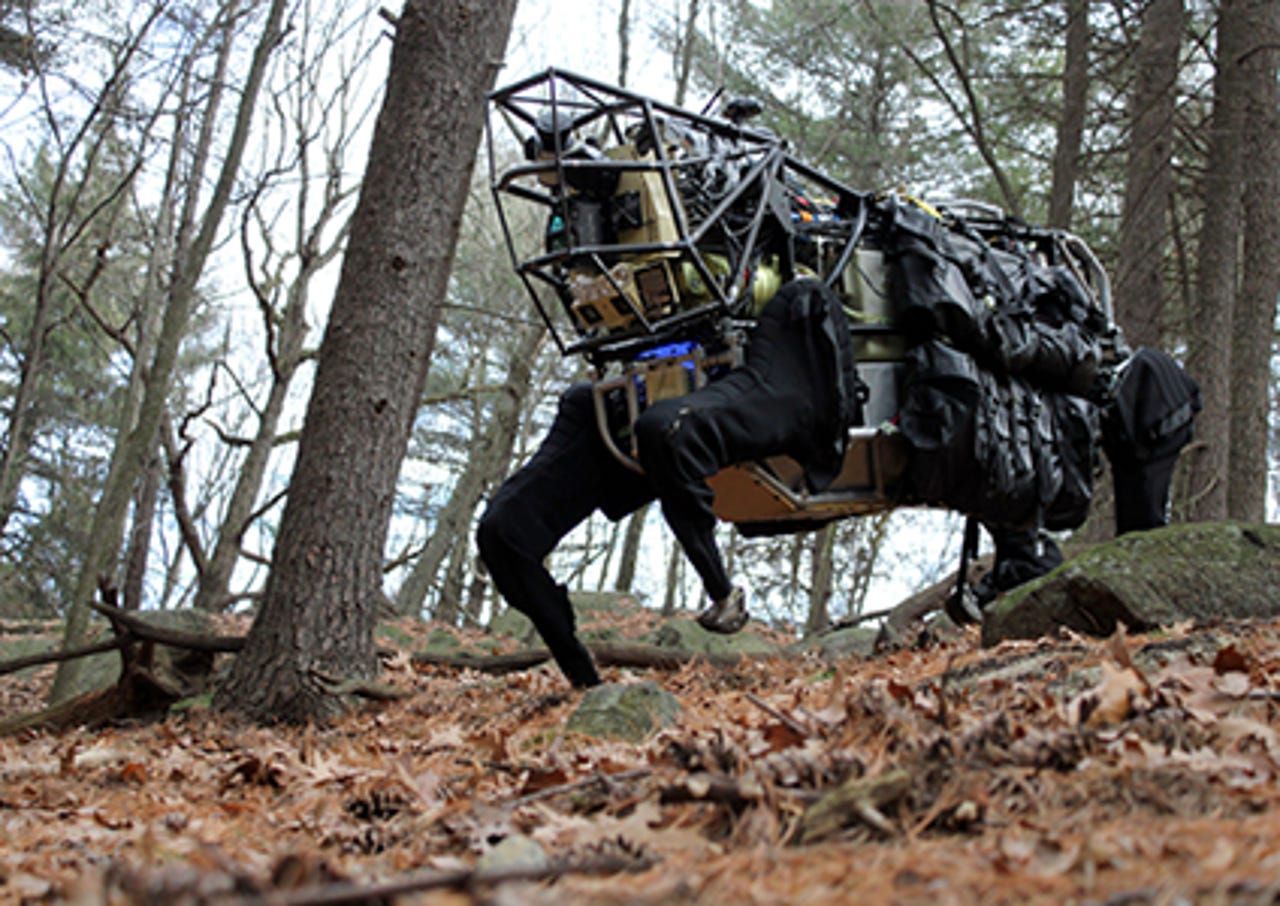DARPA invests $10m towards bulletproof robotic mules

The 4-legged, driverless LS3 -- for the Legged Squad Support System -- from Boston Dynamics is already a rough-terrain robot that can handle running into trees and falling into ditches. It's designed to go where marines and soldiers go on foot, helping to carry up to 400 pounds of gear and enough fuel to last 20 miles and 24 hours.
Now, the Defense Advanced Research Projects Agency wants the next generation LS3 to be stealthy, bulletproof, and read for action. They've awarded the company an extra $9,983,844 modification.
According to a U.S. Department of Defense release last week:
LS3 seeks to demonstrate that a legged robot can unburden dismounted squad members by carrying their gear, autonomously following them through rugged terrain, and interpreting verbal and visual commands.
... the modification adds additional tasks to the contract for the development of an enhanced version of the LS3 system with increased reliability and usability, enhanced survivability against small arms fire and a quiet power supply to support stealthy tactical operations.

- S3's gas-powered hydraulic pump sounds like a swarm of angry bees, if the bees were the size of domestic cats.
- Finding a power supply that can keep LS3 running all day isn't going to be easy; it's very hard to match the power density and general availability of liquid fuel.
- One option might be to turn LS3 into a hybrid, giving it a temporary on-demand "stealth mode."
- Since it's not designed for combat, it has vulnerable spots, such as its complicated and expensive head sensors.
- Some of the hydraulics might not react well to being shot either.
The estimated completion date is March 31, 2015.
[Defense.gov, Boston Dynamics via IEEE Spectrum]
Images: Boston Dynamics
This post was originally published on Smartplanet.com
